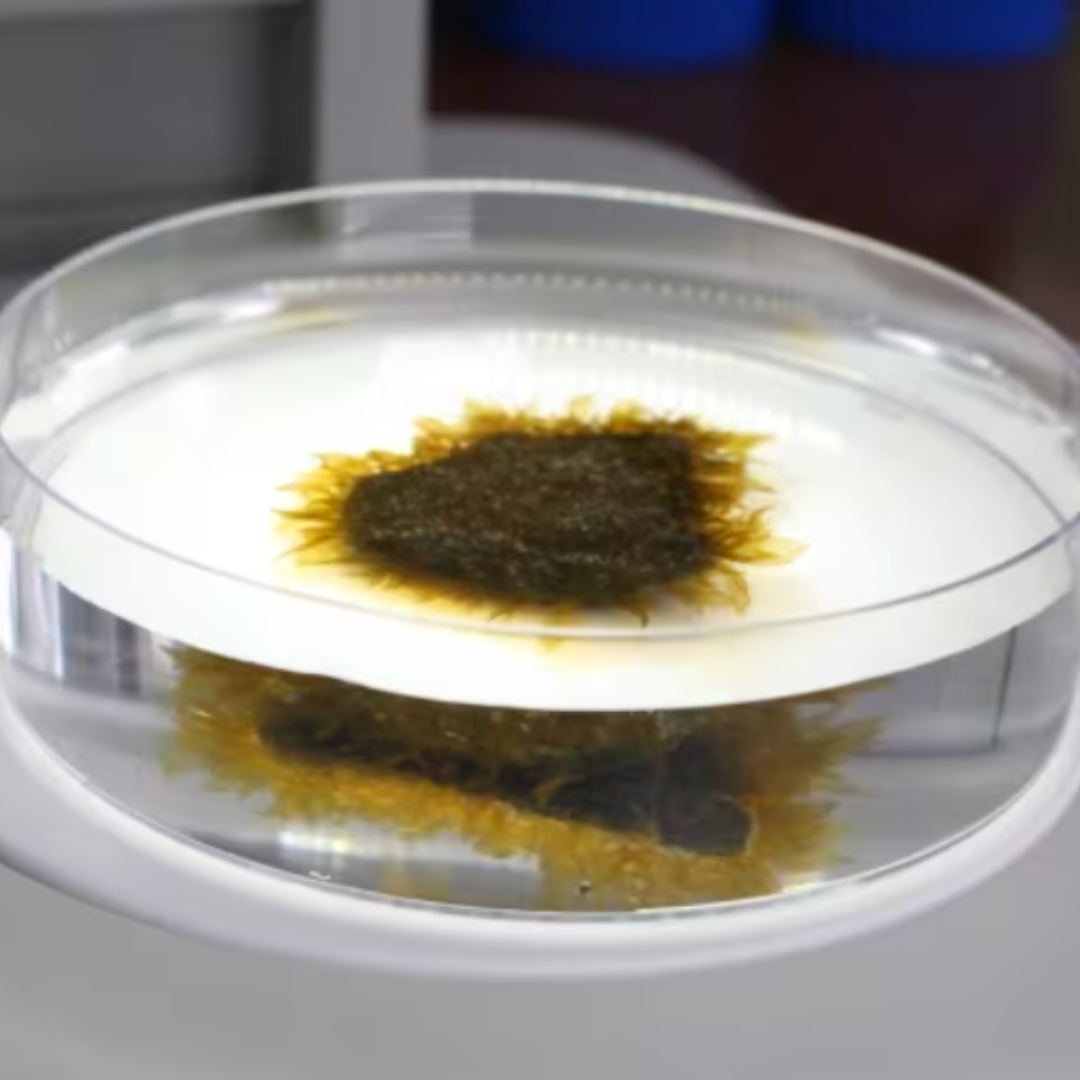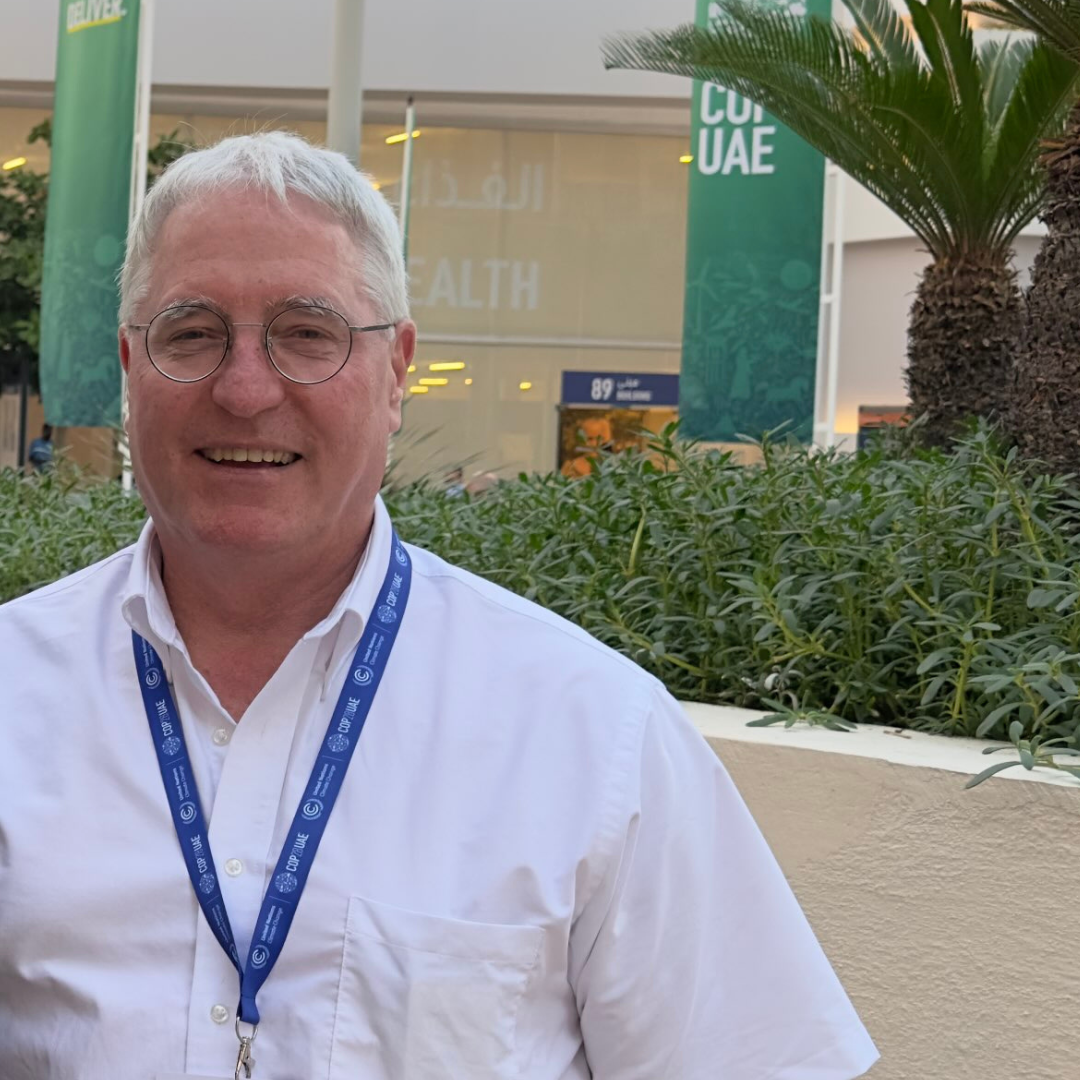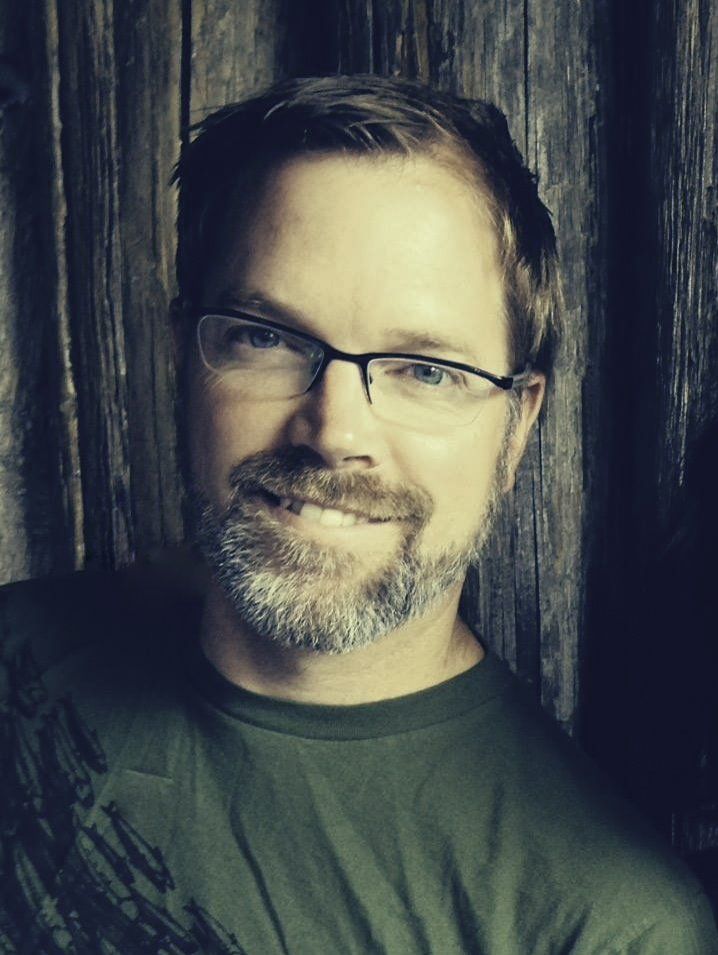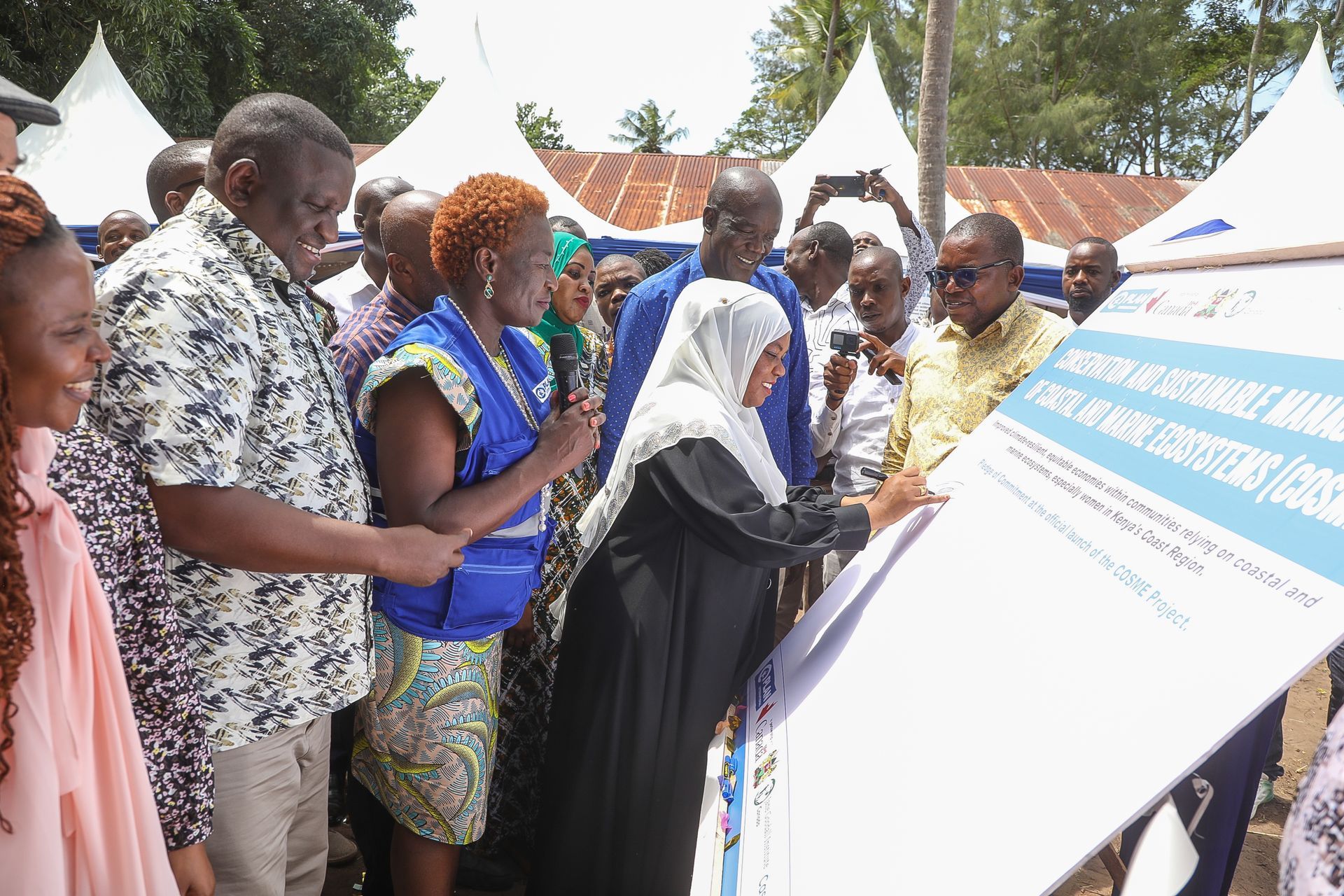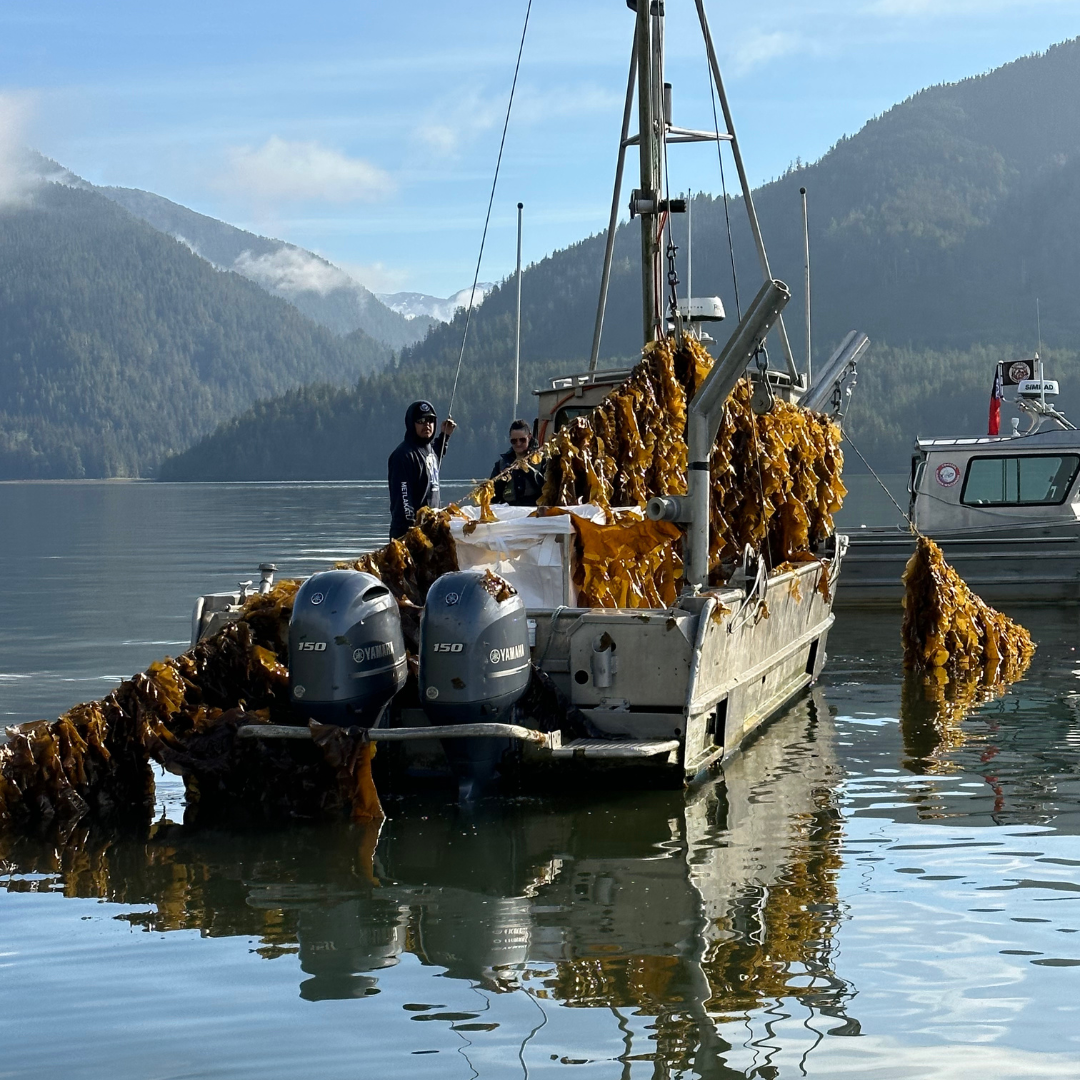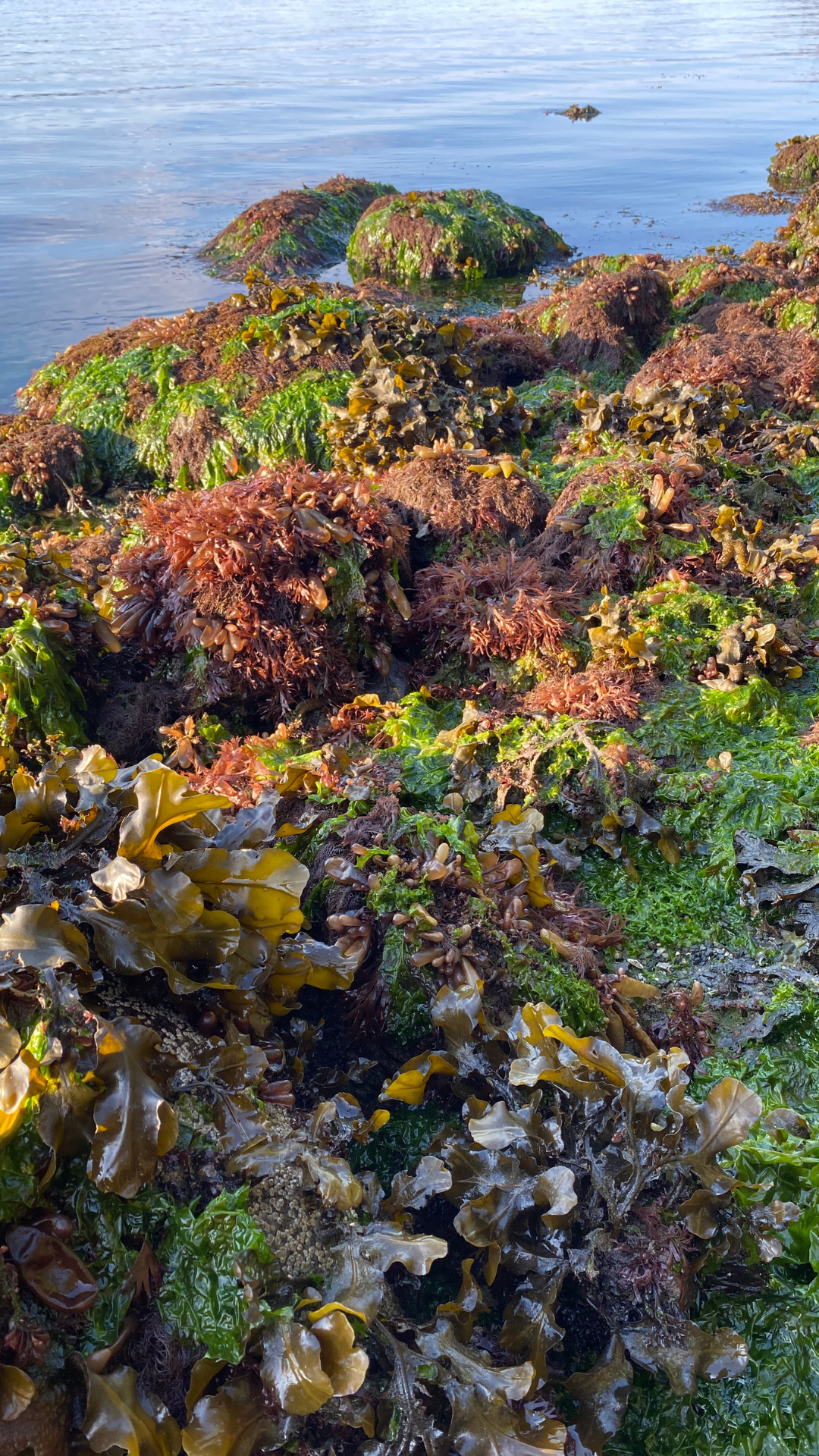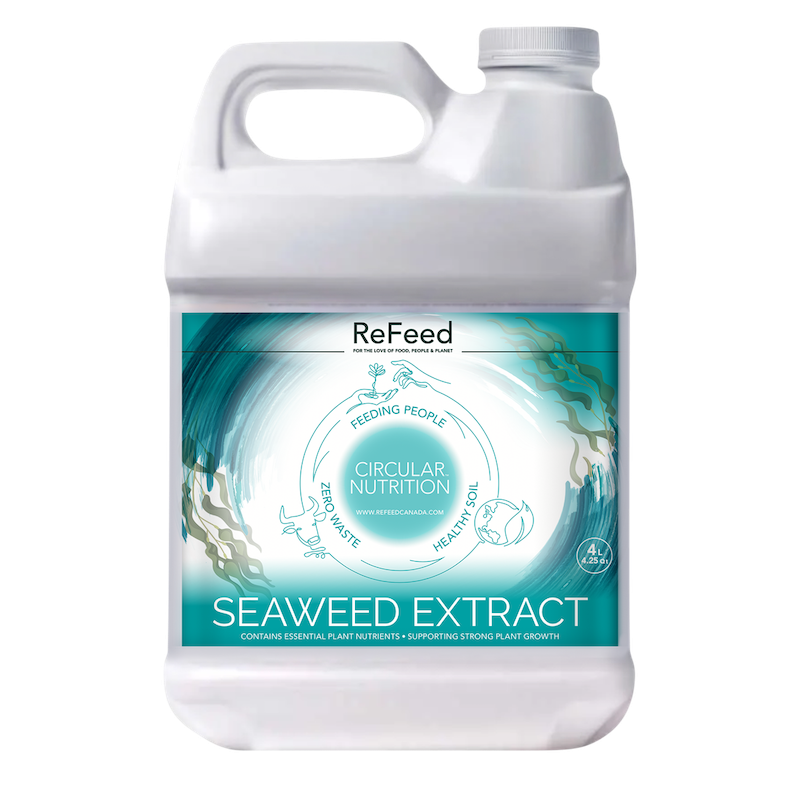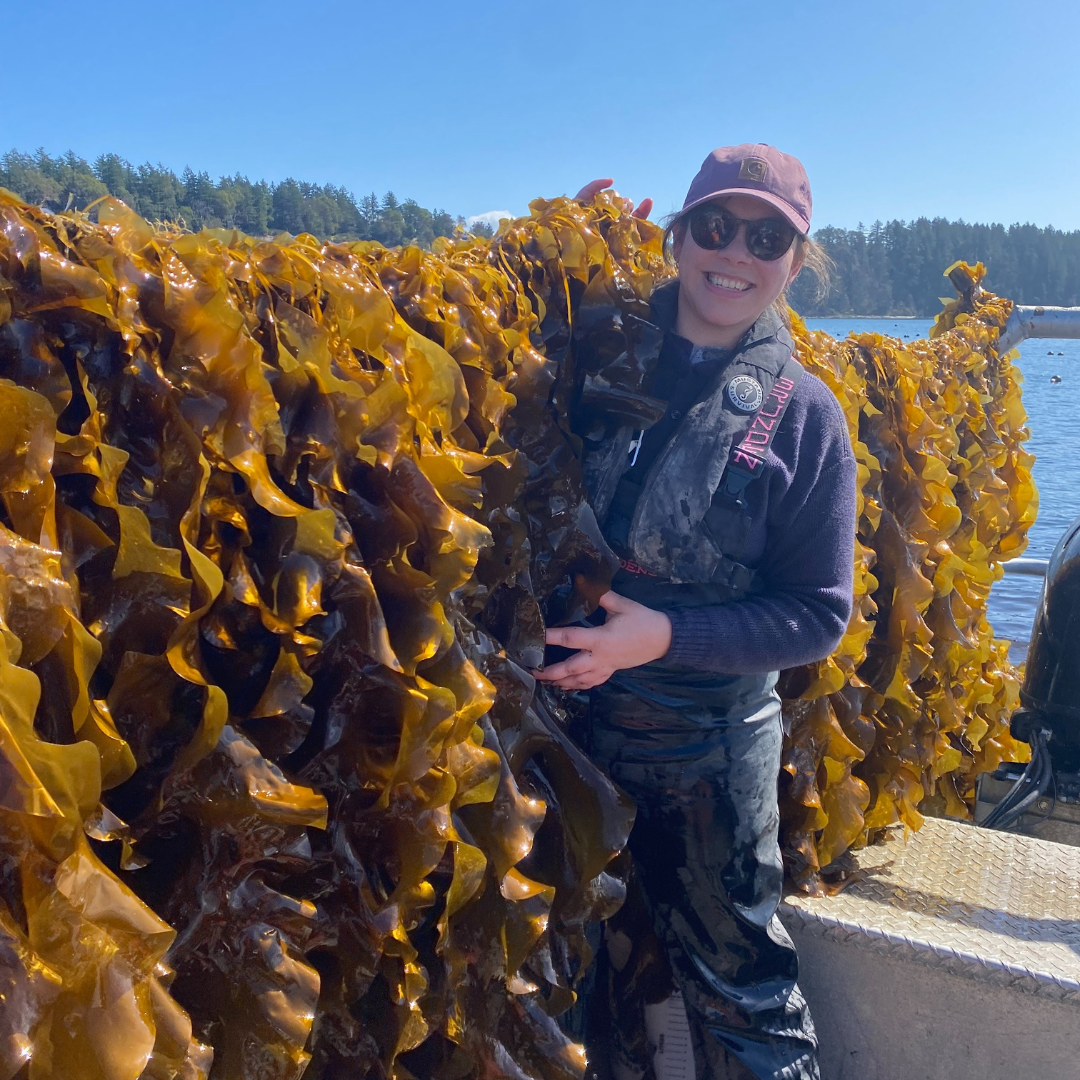At Cascadia Seaweed, we cultivate local species of seaweed and manufacture products for crop and cattle farmers.
With funding from Canadian federal and provincial governments, Cascadia Seaweed is studying its kelp farms as habitats for salmon and other marine life. The BC SRIF project aims to research the protection and restoration of wild fish stocks, including salmon, which has seen a decline in population.
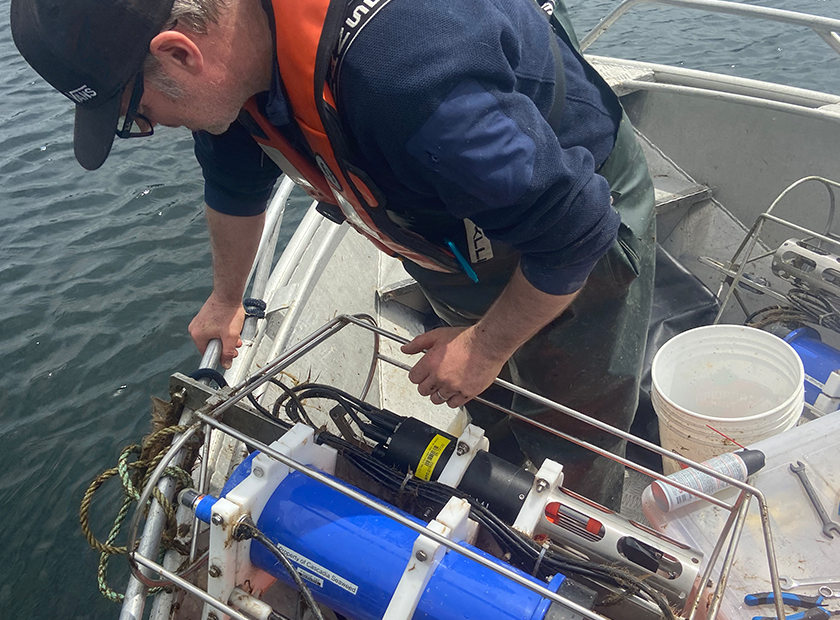
Marine survival rates of salmon in the Salish Sea have been steadily decreasing in the past 50 years. Studies have shown that there are many contributing, interlinked factors to this decline. Among the top influencers are disruptions in food webs and predation. Concurrently, a climate-driven decline in forage fish and plankton is underway. Without these important prey resources for the salmon and other wildlife, food grows scarce. In turn, the lack of nearshore habitat complexity leaves salmon vulnerable to larger prey, such as harbor seals. Research has already concluded that naturally occuring kelp forests benefit the salmon and forage fish that inhabit them. Therefore, it is worth assessing if purpose-built kelp farms can do the same.
Kelp plays an incredibly important role in ocean biodiversity. A member of the brown seaweed group, it is found growing in temperate oceans and the Arctic. Kelp forests support a diverse community of ocean life. Fish, shellfish, and other organisms use seaweed as both shelter and as a source of food. These underwater canopies act as nurseries for many fish in their early life stages. It is also an extremely efficient absorber of carbon dioxide and naturally reduces ocean acidification. Without kelp and other seaweed to sequester carbon dioxide, acidity levels in the water become a threat to many ocean organisms.
Rather alarmingly, kelp forests have been declining at a rate of ~2% per year globally. They are disappearing due to coastal development, rising ocean temperatures, and changes in oceanographic conditions. The expansion of herbivore populations, such as sea urchins, has also been a major driver of kelp loss. Without kelp, there are serious implications for the viability of ocean biodiversity and the environment at large. Fortunately, one company on Vancouver Island is on a mission to heal the ocean with their kelp farms.
Cascadia Seaweed
Cascadia Seaweed is keen to study the science behind kelp farms and their effects on the environment. Dr. Colin Bates, Cascadia’s Senior Research Scientist explained, “Once we have an efficient and effective method for monitoring ecosystem benefits of kelp farming, we can expand the program to the rest of Cascadia Seaweed’s farms, and share our approaches with other kelp producers so they can quantify the habitat value of their farms. Knowledge of the influence of kelp cultivation on environment and biodiversity is critical to the responsible expansion of this burgeoning industry.”
Kelp farms are a relatively new concept in the Western world and organizations like Oceans 2050 and Greenwave are boasting their potential. Aside from restoring underwater habitats, seaweed cultivated from these farms can be used as a source of food for human consumption, livestock feed, fertilizer, or even as a replacement for plastic. Its key differentiator from other ways of food production is its environmental efficiency. Concerns surrounding aquaculture’s effect on ecosystems have been brought up in the past. But done correctly, kelp farms can have a positive impact on the environment. As a pioneer of the regenerative aquaculture sector, Cascadia knows it is crucial to develop ethical and sustainable seaweed farming practices from the start.
The Project
Last year, the Canadian government invested over $142 million into the British Columbia Salmon Restoration and Innovation Fund (BC SRIF). This fund was asking for help in protecting and restoring wild fish stocks to support BC’s fish and seafood industry. Cascadia answered their call to action. Awarded with $1.8M, Cascadia planted 3.5 hectares of seaweed for the purpose of studying the relationship between kelp farms and fish biodiversity. Partnering with Ahousaht and Uchucklesaht Nations, this project takes place in two locations on the west coast of Vancouver Island: Clayoquot Sound and Barkley Sound.
“Along with fish biodiversity sampling, we are quantifying environmental conditions.” Dr. Bates commented, “In addition, we are sampling water chemistry, zooplankton biodiversity, kelp cover, and water motion. We are carrying out the sampling at two of our farms, as well as reference sites about 400m away from each farm. For this study we take measurements every 20 minutes for 13 months, so ultimately we will have an extremely rich and high-resolution understanding of how the kelp farms affect oceanographic parameters compared to the nearby reference sites.
The Solution
To monitor their farms, Cascadia has built 21 underwater video cameras, nicknamed ‘KelpCams’¹. Cascadia has modified the open-source technology to uniquely suit this project’s purpose. These cameras help visually monitor the kelp farms as a habitat for salmon and other fish native to the area. Additionally, ROVs and divers are used to conduct surveys to further evaluate fish communities found in their farms. But this information only provides part of the answer. Oceanographic conditions are required to be observed and compared with the data collected from the video imagery. For this, Cascadia turned to AML Oceanographic.
“We needed instruments that were proven, highly programmable, capable of long duration tethered deployments, multi-parameter with capabilities to measure variables relevant to both fish and seaweeds, and with means to counter the inevitable biofouling seen in marine environments,” said Dr. Bates.
Deployed at each kelp farm and reference site is a real-time AML-6 CTD instrument. This AML-6 outputs salinity and depth; other sensors measure conductivity, temperature, pressure, dissolved oxygen, photosynthetically active radiation (PAR), turbidity, and chlorophyll. Cascadia’s AML instruments are also fitted with a Street Lamp UV, as the sites are prone to rapid marine growth aka biofouling. With UV Biofouling protection, Cascadia is able to leave their instruments in situ for longer periods of time while still collecting accurate data. Without biofouling protection, alternative sondes would require frequent, expensive trips to the site for cleaning and maintenance. Having an instrument as consistent and versatile as the AML-6 means that Cascadia can collect a variety of new information from the sites. Ultimately, they will gain a better understanding of the conditions needed to promote biodiversity.
“We are just at the start of the project, so haven’t had time to capture more than a few months of data, but so far we are impressed with the level of detail in the data, and ease of use of the AML-6. We can already see how the AML-6 platform will be useful in profiling potential tenure sites, and monitoring the performance of our farms throughout the growing season”
Looking Up
For the storage of their data, Cascadia has teamed up with Ocean Networks Canada (ONC). Data resulting from this study is publicly available on ONC’s Oceans 3.0 platform. Cascadia’s project is still in its beginning stages, but they are keen to analyze their findings.
“If we demonstrate a difference in fish biodiversity between the farm sites and reference sites, we’ll have the corresponding environmental data that allows us to generate hypotheses about processes underpinning the patterns of fish biodiversity that we see.” Dr. Bates notes, “Once we more fully understand how fish utilize Cascadia’s kelp farms, we can make strategic decisions about future placement of kelp farm tenures that could increase benefits to migrating salmon and other coastal fishes.”
Swift action must be taken to restore ocean ecosystems to avert the dire consequences of disrupted food webs. As recommended in many studies, kelp forests could be a solution for healing biodiversity in the ocean. When companies like Cascadia Seaweed are dedicated to applying their scientific findings to their business practices, it bodes well for the economy and environment. In time, with the help of Cascadia’s kelp farm, some relief for dwindling salmon populations is on the horizon.

C - 9774 Third Street Sidney British Columbia V8L 3A4
Email: info@cascadiaseaweed.com
Phone: 1-778-351-4484

9774 - C Third Street Sidney British Columbia V8L 3A4
Email: info@cascadiaseaweed.com
Phone: 1-778-351-4484

